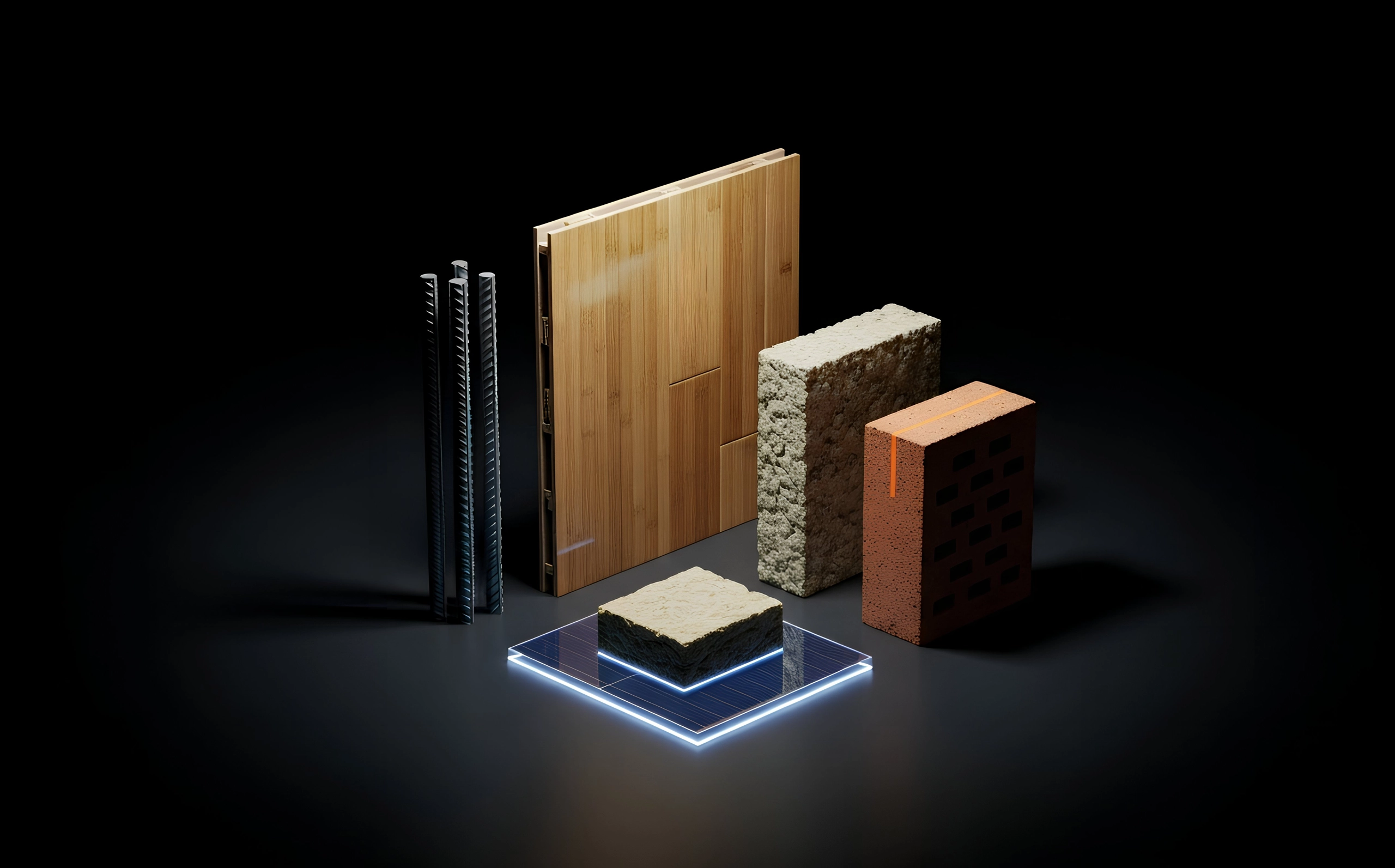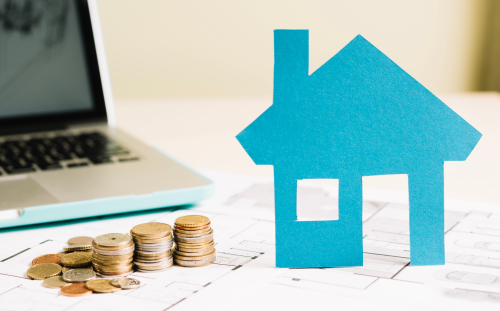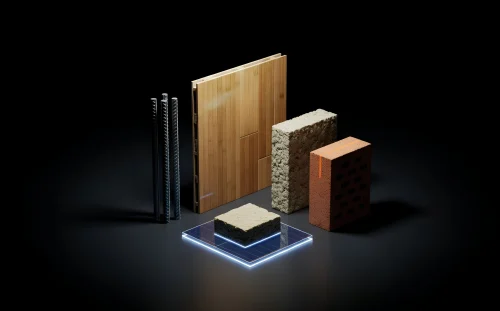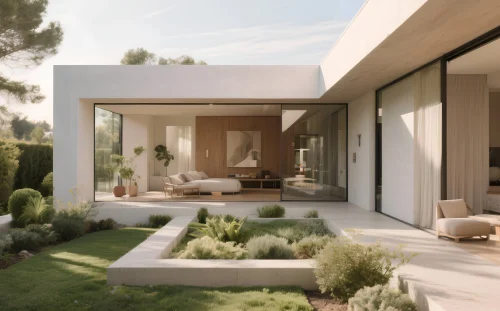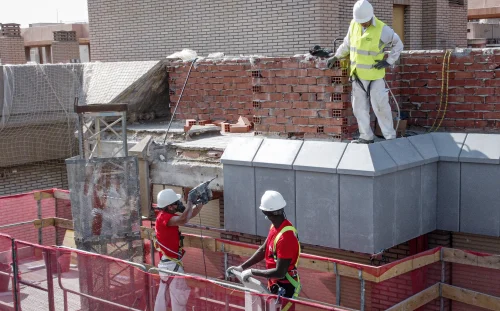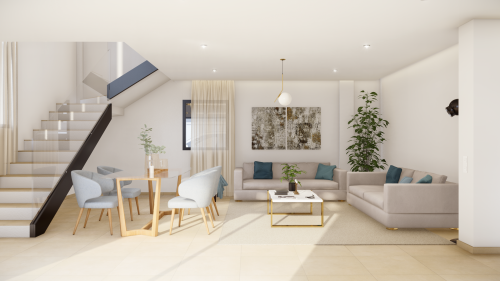La industria de la construcción se encuentra en un punto de inflexión. Responsable de aproximadamente el 40% de las emisiones globales de CO2 y del consumo masivo de recursos naturales, El sector experimenta una presión creciente para adoptar prácticas más sostenibles.
En este contexto, los nuevos materiales ecológicos emergen como una alternativa prometedora, pero surge la pregunta inevitable: ¿realmente vale la pena invertir en ellos?
Desde personalHOME tratamos de resolver esta pregunta hablándote de los diferentes materiales sostenibles que existen y realizando un análisis detallado.
Hormigón bajo en carbono y hormigón de carbono negativo
El hormigón tradicional genera grandes emisiones de CO2. Las nuevas formulaciones con cenizas volantes, subproductos siderúrgicos y materiales puzolánicos reducen su huella de carbono. Algunos hormigones incluso absorben CO2 durante su vida útil, actuando como sumideros de carbono.
Madera laminada cruzada (CLT)
Este material de ingeniería permite construir edificios de gran altura con madera, almacenando carbono en lugar de emitirlo. La madera CLT ofrece resistencia comparable al hormigón armado, con tiempos de construcción reducidos y menor peso estructural.
Bioladrillos y bloques de residuos reciclados
Empresas de todo el mundo están fabricando ladrillos a partir de plásticos reciclados, residuos agrícolas o microorganismos. Un ejemplo destacado es el bioladrillo, hecho con botellas PET rellenas de desechos no reciclables. Aunque en su utilización no reemplaza al ladrillo estructural, es ideal para muros no portantes y proyectos ecológicos de bajo coste.
Aislamientos naturales: del cáñamo al corcho
Los aislantes sostenibles, como el aislamiento de cáñamo, lana de oveja, celulosa reciclada o corcho expandido, son excelentes alternativas a la fibra de vidrio o el poliestireno. Ofrecen gran capacidad térmica, regulan la humedad y, al final de su vida útil, son biodegradables o reciclables.
Vidrio inteligente y materiales fotovoltaicos
Los vidrios electrocrómicos pueden cambiar su opacidad según la luz solar, reduciendo la necesidad de climatización. Por otro lado, los paneles solares integrados en materiales de construcción (BIPV) permiten que fachadas y tejados generen energía limpia sin comprometer la estética del diseño arquitectónico.
Análisis coste-beneficio de los materiales sostenibles
Aunque estos materiales suelen ser más caros al adquirirlos (alrededor del 10-20% de incremento), generan importantes beneficios económicos: reducen los costes energéticos hasta un 40-50% mediante mejor aislamiento térmico, incrementan el valor del inmueble entre un 7-15% gracias a certificaciones ambientales (LEED, BREEAM, VERDE), y permiten alcanzar mayores tasas de ocupación y precios de alquiler premium, ya que los inquilinos valoran los espacios saludables y ecoeficientes. Estos ahorros y beneficios compensan con creces la inversión inicial a lo largo del tiempo.
¿Entonces, vale la pena invertir?
La respuesta es un rotundo sí, pero con matices. La inversión en materiales sostenibles tiene sentido cuando:
Se analiza el coste total del ciclo de vida, no solo el precio inicial. Los ahorros operativos y el incremento del valor del activo justifican la inversión adicional en la mayoría de los casos.
Se busca diferenciación en el mercado. Los edificios sostenibles atraen inquilinos y compradores de mayor poder adquisitivo, dispuestos a pagar por calidad y responsabilidad ambiental.
Se planifica a largo plazo. Los beneficios máximos se obtienen con una visión a 10, 20 o 30 años, no en proyectos especulativos a corto plazo.
Se consideran los riesgos regulatorios. Las normativas ambientales solo se volverán más estrictas, haciendo que la sostenibilidad pase de ser una ventaja competitiva a un requisito básico.
En personalHOME lo tenemos claro: apostar por materiales sostenibles no es una moda, es una manera más inteligente de construir. Cada nueva innovación —desde el hormigón bajo en carbono hasta los aislamientos naturales o los vidrios inteligentes— abre la puerta a un futuro donde la eficiencia y el diseño van de la mano con el respeto al medio ambiente.
Invertir en sostenibilidad no solo mejora el planeta, también aumenta el valor de los edificios, reduce los costes energéticos y aporta bienestar a quienes los habitan. Por eso, en personalHOME analizamos cada proyecto con una mirada global, buscando siempre el equilibrio entre rendimiento, estética y responsabilidad ambiental.
Nuestro compromiso es claro: construir hogares que duren, que inspiren y que dejen una huella positiva. Porque el futuro de la construcción será sostenible… y nosotros ya estamos trabajando en él.

